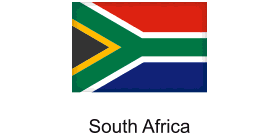 Nature's Wonders Unveiled: St Lucia Estuary Mouth Breaches Again, Enhancing KwaZulu-Natal's Eco-Tour
Nature's Wonders Unveiled: St Lucia Estuary Mouth Breaches Again, Enhancing KwaZulu-Natal's Eco-Tour
The iSimangaliso Wetland Park in KwaZulu-Natal is buzzing with excitement as the St Lucia Estuary Mouth has once again breached into the ocean. This natural phenomenon occurred near the famed Maphelane dune, recognized as the tallest vegetated sand dune in Africa and the second tallest globally. Such events offer a glimpse into the dynamic ecosystem of the region, which is a must-visit for travelers seeking unique natural experiences.
On the morning of January 10, 2025, heavy rainfall across KwaZulu-Natal facilitated this significant ecological event. Floodwaters pouring from the uMfolozi River played a crucial role in the natural breaching process, pushing through the estuary mouth that had been closed since August 2024. The timing of this breach is noteworthy, emphasizing the seasonal changes that affect the region's biodiversity and landscapes, making it a fascinating talking point for travel professionals.
The management at iSimangaliso Wetland Park views this natural occurrence as a crucial part of their Estuary Management Plan, aimed at preserving the delicate balance of the region’s ecosystems. This proactive approach not only benefits the environment but also enhances the park's appeal to eco-tourists. For travel agents, promoting this aspect can attract visitors interested in sustainable travel options and nature conservation.
Continuous monitoring of the St Lucia system is in place, with the involvement of various partners and stakeholders. This collaborative effort underscores the commitment to maintaining the ecological integrity of the area. Travel agents can leverage this information when marketing tours to the park, highlighting the ongoing preservation efforts and the opportunity for visitors to witness nature in action.
For context, the last natural breaching of the St Lucia Estuary Mouth occurred on April 14, 2022, before it closed again on August 25, 2024. Such cycles are essential for maintaining estuarine health and biodiversity. Travel professionals can use this historical context to educate clients about the importance of these natural events and their impact on local wildlife, making their trips even more enriching.
In conclusion, the recent breach of the St Lucia Estuary Mouth is an exciting development for both the iSimangaliso Wetland Park and the broader KwaZulu-Natal region. As travel agents look to enhance their offerings, this event presents a unique opportunity to promote eco-friendly tourism in a place renowned for its natural beauty and biodiversity. Emphasizing these experiences can help draw in eco-conscious travelers eager to explore Africa's rich landscapes.
